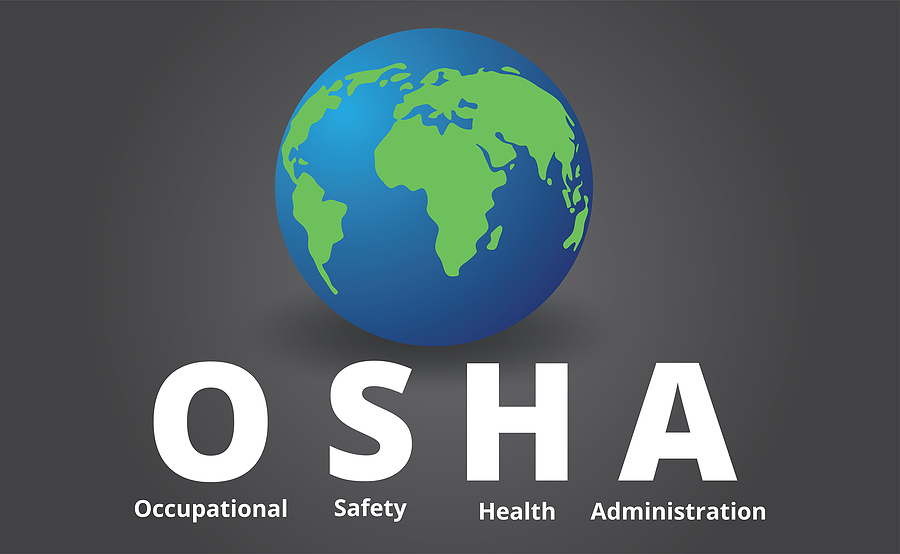What are the Factors of OSHA Training Critical to Workplace Safety?

Safety at the workplace is a serious issue for every company. It is every employers duty to provide a workplace safe for their employees, which means they must understand the risks and hazards their workers face. OSHA training is one of the primary tools that ensures safety in any workplace.
OSHA, short for the Occupational Safety and Health Administration, is a federal agency that issues and enforces workplace safety regulations. The purpose of OSHA training is to teach workers and employees how they should recognize and avoid potential hazards on the job.
In order to have a better appreciation of the reasons why OSHA training is necessary in ensuring a safe and healthy working environment, we shall look at the significance of OSHA, the advantages of OSHA training and why it is important that companies have implemented proper training programs in their place of work.
Why is OSHA Important?
OSHA safeguards and ensures safe and healthful working conditions for approximately 130 million American workers at more than 8 million sites around the nation– from Wall Street to Main Street, and 7.9 million establishments in between.
In addition to making workplaces safer, OSHA may prompt:
- Increased productivity of your workforce
- Reduced absenteeism
- Better financial returns
- Lower legal exposure
OSHA is a key component of workplace safety, both in terms of safety standards and enforcement and the inspection of workplaces.
OSHA’s value is in protecting workers from potential workplace dangers and hazards. OSHA protects workers by establishing and enforcing workplace safety standards and by conducting workplace inspections to ensure that employers find and help stop safety-on-the-job hazards.
OSHA training also has an important role in maintaining a safe work environment, so that employers and workers can recognize hazardous situations and know how to avoid them.
What’s more, adhering to OSHA rules can prevent employers from facing expensive fines and penalties of non-compliance that will have a direct effect on the bottom line of their business. Even small employers should prioritize workplace safety and follow OSHA rules, which can lead to a safer and healthier work environment along with lower work-related injuries and illnesses and better productivity and employee morale.
Why is OSHA Necessary?
You might ask, indeed, what we need OSHA for. So what was OSHA for, in the first place?
OSHA was formed as part of the Occupational Safety and Health Act in 1971, and its primary concern is to ensure employers are providing employees with a safe and healthy work environment.
The OSHA law was created by congress to assure safe and healthful conditions for working men and women by setting and enforcing standards and by providing training, outreach, education and assistance.
When the act was established, there was an increasing awareness that U.S. workers faced unsafe and hazardous working conditions, resulting in injuries, illness, and in many cases, death.
OSHA came into being because, prior to its creation, there was no comprehensive federal regulation of workplace safety, and many employers were not doing enough to protect workers from dangerous conditions. Employees did not have legal protection or resources to work safely.
OSHA was necessary to combat these problems and create a more inclusive system for securing the safety of the workplace. OSHA was directed to develop and enforce safety standards, perform inspections, and offer training and education to employers and employees.
OSHA’s rulemaking and program development have resulted in better working conditions and improved workplace safety and health. Since OSHA was established in 1971, it has played a part in reducing the number of workers killed on the job by 66%.
OSHA has also empowered workers, including the authority for workers to report unsafe work environments, and to play a role in the formation of workplace safety protocols.
Why is OSHA Training Important?
OSHA training and education educate workers and managers about workplace hazards and appropriate hazard controls to assure workplace safety. This information helps you work more efficiently and increase productivity while keeping dangers and accidents at low.
Safety Training Provides employers, supervisors, managers and workers with:
- What they must know and what they must be able to do to work safely, without presenting a danger to themselves or others.
- Become conscious and learn about job hazards, so they can report control or identify them.
- Specialized training is provided for particular work that presents unusual hazards.
Additionally, safety manager training also enables managers to:
- Adhere to federal and state safety and health mandates.
- Do their jobs better.
- More efficient rates of production and assurance of product quality.
OSHA certification allows staff to recognize potential hazards and reduces likelihood of an accident before it happens. It can then prevent further workplace injuries, illnesses, and deaths, as well as the pain and suffering and the direct and indirect costs of workers’ compensation for workers, their families, and employers.
What Benefits Does OSHA Offer?
Once the federal government started to make laws about protecting workers on the job, as well as making a profit when they got “used up,” it turned out that employers gained, too, from these standards.
Here is a look at some of the major benefits to OSHA.
Setting and Enforcing Safety Standards
OSHA establishes safety requirements across numerous industries and ensures compliance through inspections and fines for violators. This, in turn, helps ensure that employers are providing a safe and healthy environment for their employees.
Training and Education
OSHA provides training and education to both employers and employees to ensure that they are able to recognize workplace hazards and how to prevent exposure from these hazards. This can be a great way to avoid workplace accidents and injuries.
Compliance with Regulations
OSHA safety training is in place to help keep the federal and state regulations enforced. This will help employers prevent fines and legal costs for non-compliance.
Per OSHA regulations, companies should hold a training history file on each employee. It’s not just about providing the training, OSHA is looking for the training to work. When conducting an inspection, OSHA can evaluate whether employees can demonstrate an understanding of the standards and existence of hazards to which they are exposed and the purpose of the training.
Research and Outreach
Research and Outreach OSHA provides support to the research and outreach agencies when issues are identified: new safety standards. It is important that OSHA standards reflect current risk and are effective in protecting workers to the greatest extent feasible.
Whistleblower Protection
OSHA offers protections for workers who report safety violations and other issues at their workplace. This is to encourage employees to report safety concerns without fear of reprisals.
Legal Protection
Employers who offer OSHA training to their staff members have more protection when it comes to lawsuits involving accidents or injuries in the workplace. It indicates that the employer was committed to a safe work environment and that employees were trained to work safely.
Businesses are required to allow for OSHA to come in and inspect and evaluate businesses to the standard of safety. If a company successfully passes an inspection, they are given a document back. Personal injury claims from workers are also harder to defend if there is a current inspection report on record.
Improved Public Health
With its ability to upgrade onsite safety, OSHA is an asset not just to the workers themselves, but to the public at large, spared from hazards and environmental damage.
There are other advantages to be gained by employers in conducting safety training, including:
- Cost savings, with dramatic reductions to workers compensation premiums
- Engaged workers
- Higher efficiency
- Employee Morale Boosted
- And increased focus on social responsibly targets
- Improved productivity and business operations overall
It is with the help of an adequate training program and realistic goals that one can move towards higher levels of safety and health achievement.
Who Gains the Most From Office Safety Rules?
Safety and health at work are important issues for all parties within the workplace. Yet it’s workers who stand to gain most directly from workplace safety standards.
By complying with workplace safety guidelines and minimizing the potential for on the job accidents and injuries, your employees:
- Prevent lost days at work and medical bills and long-term health issues
- Enhance employee motivation and job satisfaction
- Enhancing employee performance and lowering attrition rates
Workplace safety regulations are also good for employers as they help cut down on the costs of on-the-job accidents and injuries. Delivering training at work can benefit employers financially in two ways:
- Showing that the cost to prevent an accident is much less than the cost of an accident
- Reducing workers compensation expense and medical costs
- Decrease in loss workdays
- Reducing damage to equipment, saving product lost
Finally (and arguably most importantly) society benefits from workplace safety standards: reducing the incidence of environmental hazards, and public health problems.
Employers who offer a safe and healthy workplace also can improve employee recruitment, retention, and reputation in their field.
Discover the value OSHA has in the workplace by providing OSHA training to your employees and starting your path to OSHA compliance.
Meet and satisfy all your compliance training needs and requirements with our OSHA-authorized safety training now!
